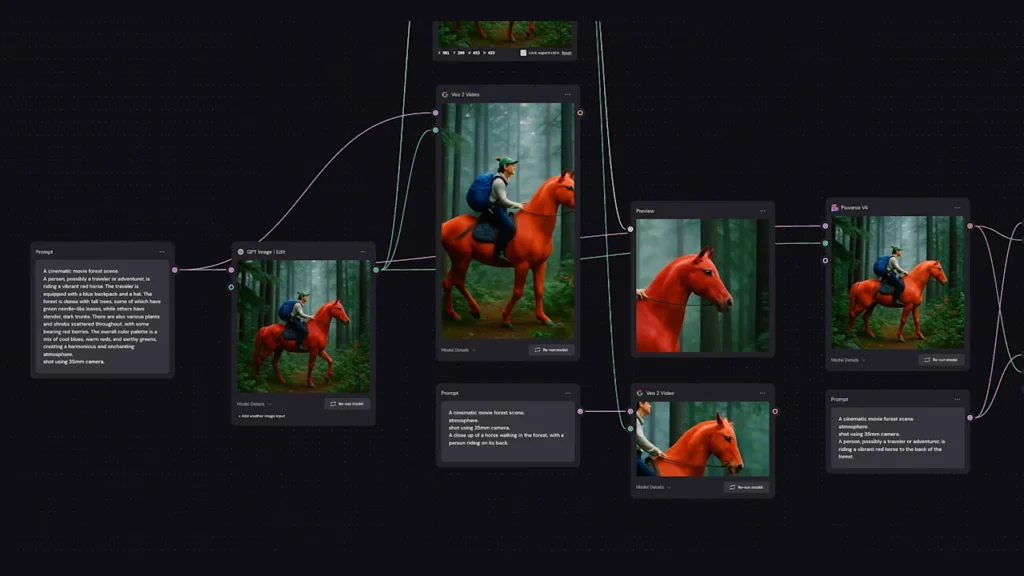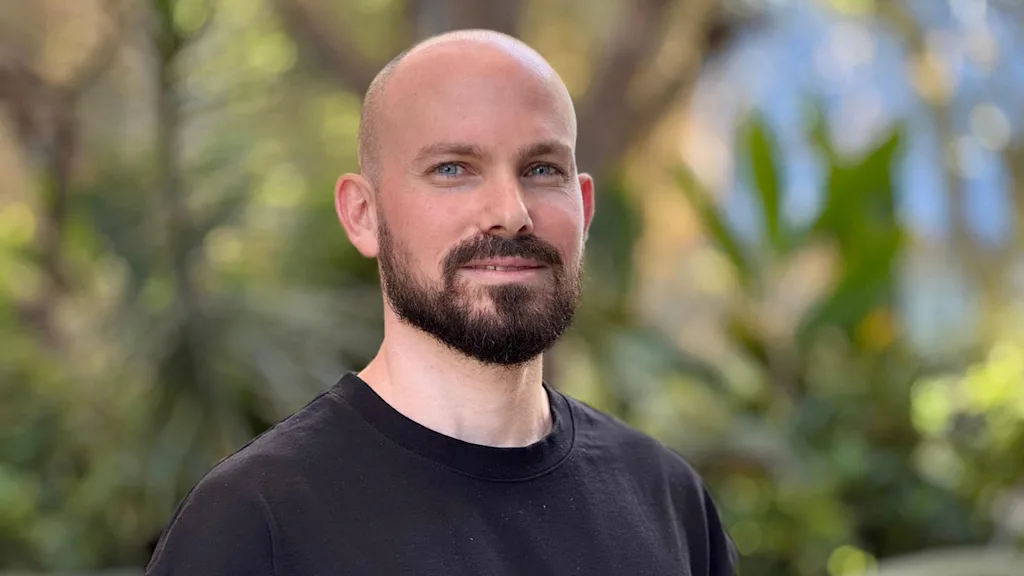
Recently, Figma CEO Dylan Field assembled employees from throughout the company for a demo of a new-ish tool for generating, refining, and editing synthetic images and videos. Rather than being built around one-off prompts, it allowed users to create visual workflows for comparing and manipulating options created by different AI models. It also facilitated putting imagery through multiple rounds of polishing and remixing, adding a large dose of human taste and quality control to the process.
According to Field, they were “mesmerized” by what they saw. “We had it scheduled for 20 minutes,” he remembers. “And 20 minutes came, and everyone’s like, ‘No, no, please keep going. We’ll cancel the next session—this is the most magical thing.’ We went for an hour.”
The tool that wowed the Figmates, as Figma employees call themselves, was the creation of an Israeli startup. Both were known as Weavy—but not for long. Figma had already agreed to acquire the company. Slightly rebranded as Figma Weave, its product will join Figma’s growing portfolio of web-based apps for designing interfaces, whiteboarding ideas, creating presentations, AI-assisted coding, and more.

Figma isn’t disclosing the terms of the acquisition, its first since its July IPO. It will result in around a dozen Weavy staffers joining the company, including cofounders Lior Albeck, Jonathan Alumot, Jonathan Gur-Zeev, and Itay Schiff. Describing its vision as “artistic intelligence,” the startup was founded in 2024 and announced a $4 million seed funding last June. In its short existence, it had lined up an impressive customer list, including Google, Nvidia, Toyota, Dyson, Panasonic, and HP.
Its product’s interface provides a canvas for connecting building blocks called nodes to create a flowchart-like system of inputs and outputs. One example project starts by feeding a prompt into several still-image generators, then sends the nicest one on to serve as source material for several video generators. Another deconstructs an image into editable layers, allowing for the sort of masking and tweaking that was once solely the province of a product such as Photoshop. A third starts with an actual beauty shot of a dessert taken in a studio, then generates purely synthetic images of other foodstuffs that retain its look and feel. Workflows can accept user input that affects their operation, turning them into mini-apps with ongoing value.

Many tools have long helped users perform programming-like feats via workflow builders with some conceptual similarities to Weave, if not its emphasis on AI and imagery. One you might be familiar with is Apple’s Shortcuts. Field himself remembers using another called LabVIEW in middle school. But the unusual degree of buzz around Weavy’s implementation of the idea attracted his attention.
“I started to hear about it from people who are connoisseurs of product and have good taste,” he says. “It spiked as something to check out.”
Meeting with the startup’s founders, Field bonded over their approach to balancing power and approachability, which struck him as Figma-esque. As he explains it, ”My job to get right every day, from a product standpoint, is, how do you balance the power of a tool with approachability and simplicity? It’s a constant battle. I just felt like the way that they were thinking about that aspect was extraordinary.”

Field was also attracted by the fact that their product didn’t spit out AI images and videos allegedly ready for use. Instead, it was about making it easier for human creators to slice, dice, and otherwise rework them before they ever appeared anywhere.
“It’s easy to consider AI outputs as the final destination, but that’s not the way you should think about it,” he says. “They’re just this new creative starting point. You can use them like clay, and you can figure out how to transform them. And I think [Figma Weave] does a really good job of showing how it’s possible.”
Field says that Figma is working on integrating Weave with its broader ecosystem—both making it possible to bring Figma designs into Weave and adding elements of Weave to other products. It’s also planning to speed further development through additional hires. Maybe most of all, he’s mindful of the delicate work involved in not screwing up what Weavy created on its own.
“They’ve got the trust of their community,” he told me. “I think it’s very important for Figma to show that we’ll be a good steward of the team, of this platform—and that we’re doing everything we can to help them build.”